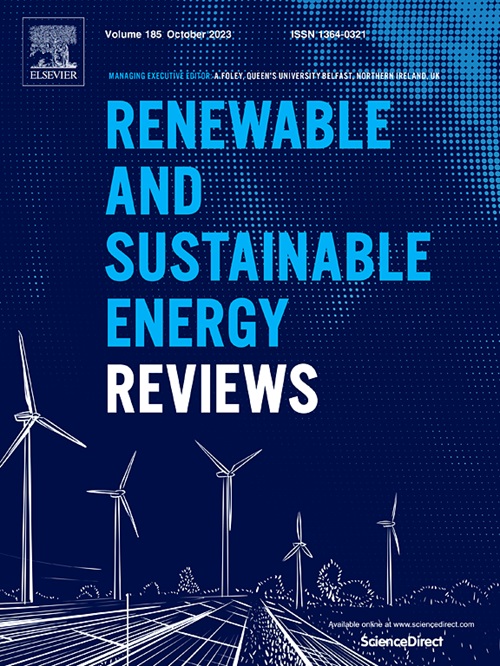Mooring design for floating wind turbines: A review
IF 16.3
1区 工程技术
Q1 ENERGY & FUELS
引用次数: 0
Abstract
Mooring systems are essential for ensuring the safety and station-keeping of floating offshore structures. Despite advances in mooring technologies over the past two decades, several design challenges remain. The design of mooring systems is a multidisciplinary task that requires expertise in marine hydrodynamics, structural mechanics, materials engineering, and mechanical design. This paper reviews state-of-the-art mooring designs for floating wind turbines, addressing key aspects such as floater-mooring interactions, material and component selection, design methods and guidelines, simulation tools, and innovative solutions. This review critically examines existing mooring designs for three types of floating wind turbines from 20 projects, presents eight mooring materials, and compares three design guidelines. Additionally, three innovative mooring solutions are highlighted at the farm level. Finally, six areas for future research are identified. This review aims to contribute to the development of safe, robust, and cost-effective mooring systems for the floating wind industry.

求助全文
约1分钟内获得全文
求助全文
来源期刊

Renewable and Sustainable Energy Reviews
工程技术-能源与燃料
CiteScore
31.20
自引率
5.70%
发文量
1055
审稿时长
62 days
期刊介绍:
The mission of Renewable and Sustainable Energy Reviews is to disseminate the most compelling and pertinent critical insights in renewable and sustainable energy, fostering collaboration among the research community, private sector, and policy and decision makers. The journal aims to exchange challenges, solutions, innovative concepts, and technologies, contributing to sustainable development, the transition to a low-carbon future, and the attainment of emissions targets outlined by the United Nations Framework Convention on Climate Change.
Renewable and Sustainable Energy Reviews publishes a diverse range of content, including review papers, original research, case studies, and analyses of new technologies, all featuring a substantial review component such as critique, comparison, or analysis. Introducing a distinctive paper type, Expert Insights, the journal presents commissioned mini-reviews authored by field leaders, addressing topics of significant interest. Case studies undergo consideration only if they showcase the work's applicability to other regions or contribute valuable insights to the broader field of renewable and sustainable energy. Notably, a bibliographic or literature review lacking critical analysis is deemed unsuitable for publication.
 求助内容:
求助内容: 应助结果提醒方式:
应助结果提醒方式:


